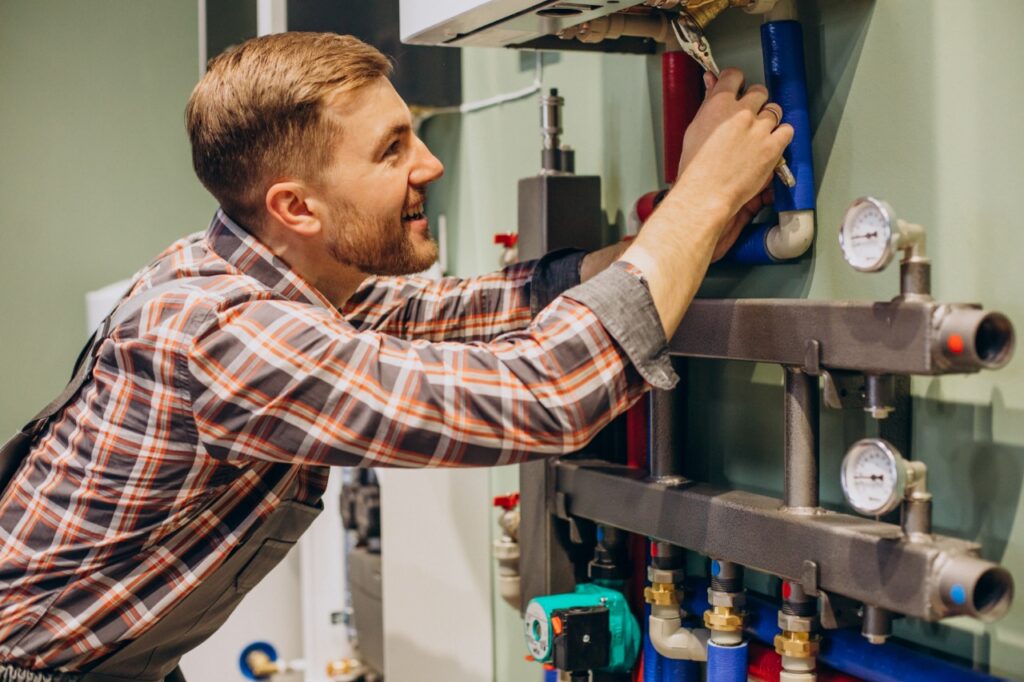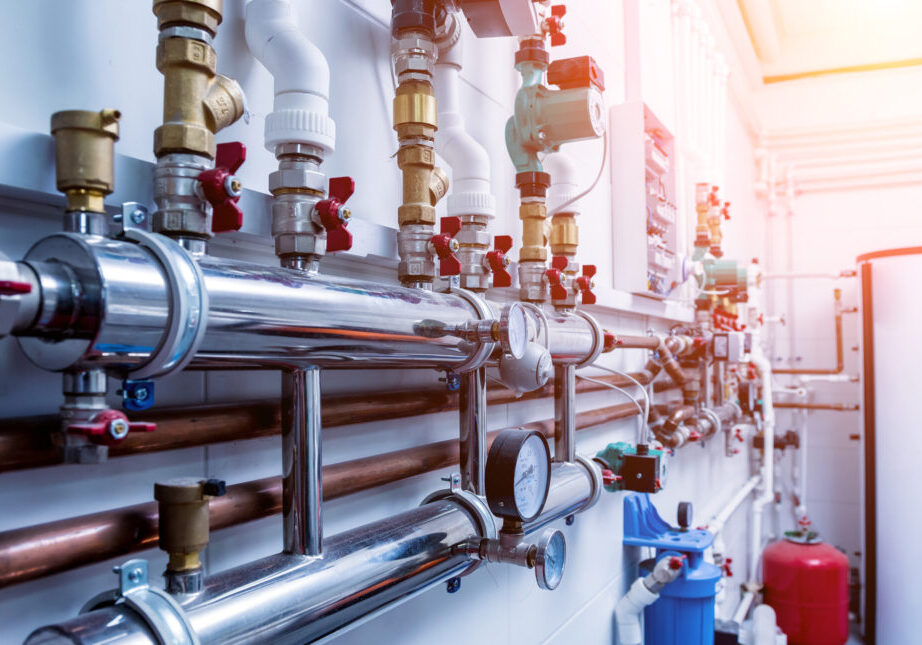Right here on the next paragraphs you will find lots of helpful material on the subject of Exploring Your Homes Plumbing Anatomy.

Recognizing just how your home's plumbing system works is essential for each home owner. From delivering tidy water for alcohol consumption, food preparation, and bathing to securely getting rid of wastewater, a well-maintained plumbing system is critical for your family's health and wellness and comfort. In this detailed overview, we'll explore the detailed network that makes up your home's plumbing and offer ideas on upkeep, upgrades, and taking care of usual problems.
Intro
Your home's pipes system is more than simply a network of pipes; it's a complicated system that ensures you have access to clean water and efficient wastewater elimination. Recognizing its components and how they work together can help you avoid pricey repair work and guarantee everything runs efficiently.
Standard Elements of a Plumbing System
Pipes and Tubing
At the heart of your plumbing system are the pipes and tubing that lug water throughout your home. These can be constructed from numerous products such as copper, PVC, or PEX, each with its benefits in regards to durability and cost-effectiveness.
Fixtures: Sinks, Toilets, Showers, and so on.
Components like sinks, commodes, showers, and bathtubs are where water is used in your house. Comprehending how these fixtures attach to the pipes system helps in detecting troubles and intending upgrades.
Shutoffs and Shut-off Factors
Shutoffs manage the flow of water in your plumbing system. Shut-off valves are essential during emergencies or when you need to make repair work, allowing you to separate parts of the system without interfering with water circulation to the entire house.
Water System
Key Water Line
The primary water line attaches your home to the community water or a personal well. It's where water enters your home and is distributed to numerous fixtures.
Water Meter and Stress Regulator
The water meter measures your water usage, while a stress regulator makes certain that water flows at a secure stress throughout your home's plumbing system, protecting against damage to pipelines and fixtures.
Cold Water vs. Warm water Lines
Comprehending the difference in between cold water lines, which supply water straight from the main, and warm water lines, which bring warmed water from the water heater, aids in fixing and planning for upgrades.
Water drainage System
Drain Pipes Water Lines and Traps
Drain pipes lug wastewater away from sinks, showers, and commodes to the drain or septic system. Traps prevent drain gases from entering your home and also catch debris that can trigger clogs.
Air flow Pipelines
Ventilation pipelines enable air into the water drainage system, stopping suction that can slow down water drainage and trigger catches to empty. Correct ventilation is essential for preserving the honesty of your pipes system.
Importance of Correct Drain
Ensuring proper drain prevents back-ups and water damages. Frequently cleansing drains and preserving traps can avoid pricey repair work and expand the life of your pipes system.
Water Heating System
Kinds Of Water Heaters
Water heaters can be tankless or conventional tank-style. Tankless heating systems warm water on demand, while tanks keep heated water for instant use.
Upgrading Your Pipes System
Reasons for Updating
Updating to water-efficient components or changing old pipes can improve water quality, decrease water bills, and boost the worth of your home.
Modern Pipes Technologies and Their Benefits
Explore modern technologies like clever leak detectors, water-saving commodes, and energy-efficient water heaters that can save cash and lower ecological impact.
Cost Factors To Consider and ROI
Calculate the in advance expenses versus lasting financial savings when considering plumbing upgrades. Lots of upgrades spend for themselves via reduced energy expenses and fewer repair work.
Exactly How Water Heaters Link to the Plumbing System
Understanding exactly how water heaters link to both the cold water supply and warm water circulation lines aids in detecting problems like inadequate hot water or leaks.
Maintenance Tips for Water Heaters
On a regular basis purging your water heater to eliminate sediment, checking the temperature settings, and examining for leaks can extend its life-span and boost power performance.
Usual Pipes Problems
Leaks and Their Reasons
Leakages can happen because of aging pipes, loose fittings, or high water stress. Attending to leaks immediately stops water damage and mold growth.
Clogs and Blockages
Blockages in drains and toilets are frequently caused by flushing non-flushable things or a build-up of grease and hair. Utilizing drain screens and bearing in mind what drops your drains can avoid clogs.
Signs of Pipes Troubles to Look For
Low water pressure, slow-moving drains, foul odors, or unusually high water bills are signs of possible plumbing problems that need to be attended to quickly.
Plumbing Maintenance Tips
Normal Assessments and Checks
Schedule yearly pipes evaluations to catch concerns early. Seek indications of leakages, deterioration, or mineral accumulation in faucets and showerheads.
Do It Yourself Upkeep Tasks
Simple tasks like cleaning faucet aerators, checking for commode leakages using color tablets, or protecting exposed pipelines in cold environments can prevent significant plumbing problems.
When to Call a Specialist Plumbing Professional
Know when a plumbing concern requires specialist know-how. Attempting complicated fixings without appropriate understanding can cause even more damages and greater repair expenses.
Tips for Lowering Water Use
Basic behaviors like taking care of leaks immediately, taking much shorter showers, and running complete tons of washing and dishes can conserve water and lower your utility costs.
Eco-Friendly Pipes Options
Consider sustainable pipes products like bamboo for flooring, which is durable and eco-friendly, or recycled glass for kitchen counters.
Emergency situation Preparedness
Actions to Take During a Plumbing Emergency situation
Know where your shut-off valves lie and just how to switch off the supply of water in case of a burst pipe or significant leakage.
Significance of Having Emergency Get In Touches With Convenient
Maintain get in touch with details for neighborhood plumbing technicians or emergency situation solutions conveniently available for quick reaction during a pipes crisis.
Ecological Effect and Conservation
Water-Saving Components and Appliances
Mounting low-flow faucets, showerheads, and bathrooms can significantly minimize water usage without giving up efficiency.
DIY Emergency Fixes (When Suitable).
Short-lived fixes like using air duct tape to patch a dripping pipe or positioning a pail under a leaking faucet can reduce damages until a specialist plumbing arrives.
Verdict.
Recognizing the anatomy of your home's plumbing system encourages you to keep it successfully, conserving money and time on repairs. By complying with normal upkeep routines and staying educated about modern-day pipes technologies, you can guarantee your plumbing system operates successfully for many years ahead.
HOW YOUR PLUMBING SYSTEM WORKS
Which Pipes Do What?
Blue lines = fresh water supply entering the building Red lines = hot water supply entering the building Grey lines = pipes carrying waste away from the building and venting pipes carrying gases away from the building (through the roof) YOUR MAIN PLUMBING SYSTEMS
There are two main plumbing systems that support your home s basic plumbing needs one that brings clean water into your home, and one that sends dirty water away from your home. Connected to the toilet, bath, shower, and other faucets in your home, these two systems keep your water flowing in the right directions.
ACCESSING FRESH WATER
Fresh and clean water is brought into your home through the main water supply line . Filtered through one pipe, this water is pressured to flow into the various fixtures in your home at any given time.
This water can be sourced from a well located on your property, a pond or river (mostly cottages), or, as in most cases, from the city s municipal water treatment centre. However, it is important to note that water that is untreated, such as the water siphoned from ponds or rivers, may not be safe to drink. Personal water supplies always need to be treated for hardness and contaminants before consumed.
MUNICIPAL WATER SUPPLIES
Improve taste and odour Remove sediment Eliminate hardness Reduce chlorine COLD WATER SUPPLY VS. HOT WATER SUPPLY
Cold water flows into your home or building through the service line, which then distributes hot or cold water to your fixtures. This line is most commonly run through a central column that runs floor to floor. Hot water runs in short and straight pipes as the longer the pipeline, the more heat that will be lost in the transfer. Having shorter pipes also allows residents to access hot water more quickly.
WASTE WATER SYSTEM
Your wastewater system is divided into two parts pipes that send wastewater away from your home and venting pipes that send sewer gas away from your home. Sewage water travels through pipes that flush the water and waste towards local sewers that are operated and managed by your city or town. Most sewer systems rely on gravity to move the wastewater to where it needs to go.
The further away from your toilet or sink, the larger wastewater pipes become. This allows for waste to be disposed of from various parts of your home or business at once without pipe blockages. The angle and flow of these pipes are also essential for keeping your waste pipes clear of build up.
https://harrisplumbing.ca/how-your-home-plumbing-system-works/

Do you really like reading up on Anatomy of a House: Understanding the Components? Leave a remark down below. We would be delighted to find out your insights about this article. In hopes that you come back again in the future. Sharing is nice. You never know, you could be helping someone out. Thank-you for going through it.
Automated Marketing